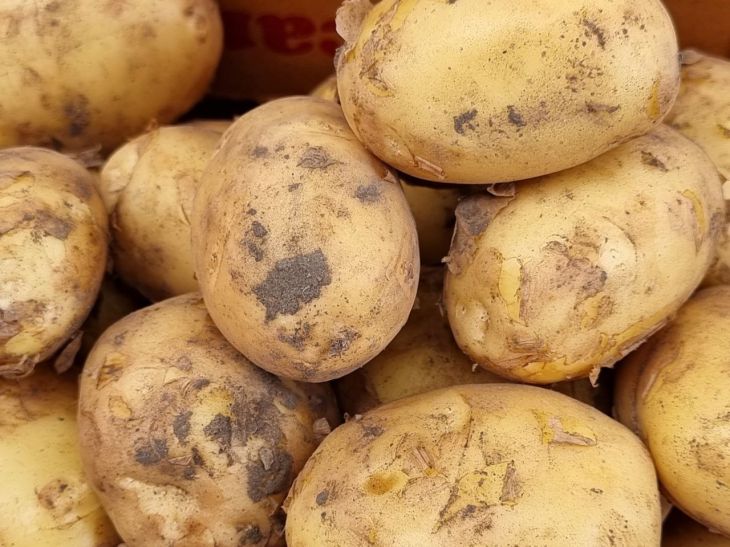How to Grow Large Potatoes: Tricks for Successful Potato Growing
Potatoes are a staple crop in many gardens and an essential ingredient in many dishes.
Growing large, healthy potatoes can be a challenge for any gardener, but it requires more than just planting and watering.
In this article, we will share some tips and tricks for successful potato growing that will result in a bountiful harvest of large and tasty potatoes.
Choose the right variety
The first step in growing large potatoes is choosing the right variety. Choose a variety known for producing large tubers, such as Russet or Yukon Gold. Avoid varieties known for producing small tubers.
Also, look for disease-resistant varieties to prevent common potato diseases such as late blight.

Set the stage
Potatoes grow best in well-drained, fertile soil. Before planting, prepare the soil by removing any weeds, rocks, or debris.
Add compost or manure to improve soil fertility and water retention. Work the organic matter into the soil to a depth of at least 6 inches.
Planting potatoes
Plant potatoes in early spring after all danger of frost has passed. Cut seed potatoes into pieces with at least two eyes in each piece.
Allow the cut potatoes to dry and calluse before planting. This process helps prevent rot.
Plant seed potatoes in rows 12 to 16 inches apart and cover with soil. As the plants grow, hill up the soil around the stems to encourage additional roots and tubers to grow. Leave only the top few inches of the stem exposed to sunlight.
Water and fertilize
Potatoes need constant moisture to produce large tubers. Water thoroughly once a week, more often in hot, dry weather. Use a hose or drip irrigation to ensure water reaches the roots of the plant.
Fertilize potatoes throughout the growing season with a balanced fertilizer. Apply fertilizer at planting and again when plants begin to flower. Avoid using fertilizers high in nitrogen, which can encourage leaf growth at the expense of tuber growth.
Pest and disease control
Potatoes are quite susceptible to a variety of pests and diseases that can damage or kill the plants and reduce yields. Monitor plants regularly for signs of pests or diseases, such as yellowing leaves, stunted growth, or holes in the leaves.
To control pests, use organic methods such as hand picking or spraying with insecticidal soap. To prevent diseases, rotate potato crops each year and avoid planting potatoes in the same place for at least three years.
Potato harvesting
Potatoes are ready to harvest when the plants begin to die back and the leaves turn yellow. Stop watering the plants about two weeks before harvest to allow the skins to harden. Use a pitchfork or shovel to carefully dig up the tubers. Be careful not to damage the potatoes, as they are susceptible to bruising and rotting.
Curing and storage
After harvesting, soak the potatoes in a cool, dark, dry place for two weeks. This process allows the skin to thicken and any small wounds to heal. Store the dried potatoes in a cool, dark, dry place, such as a root cellar or basement.
